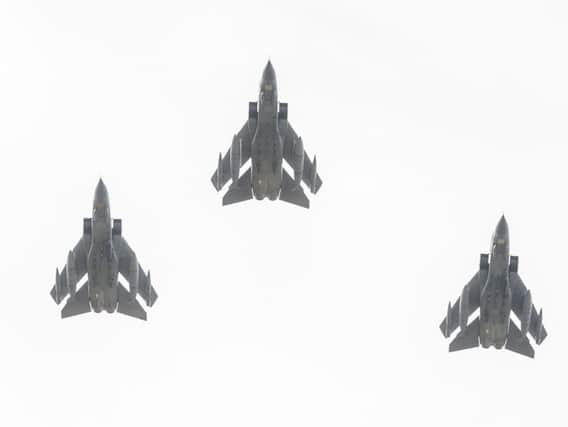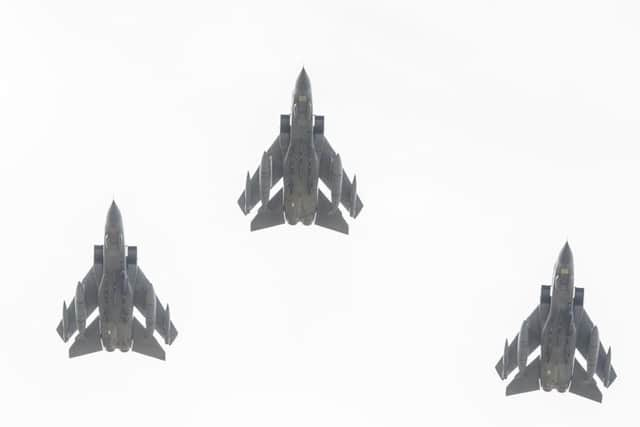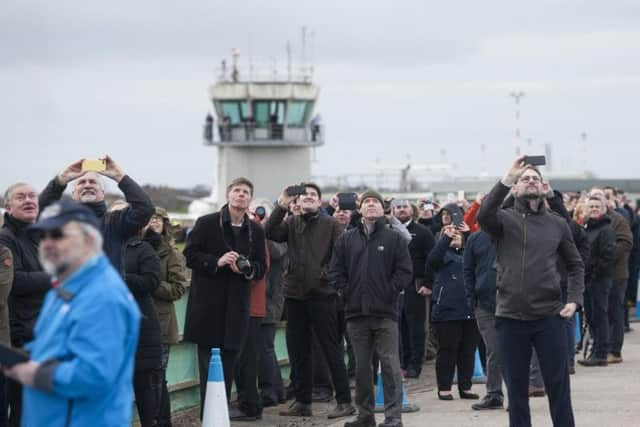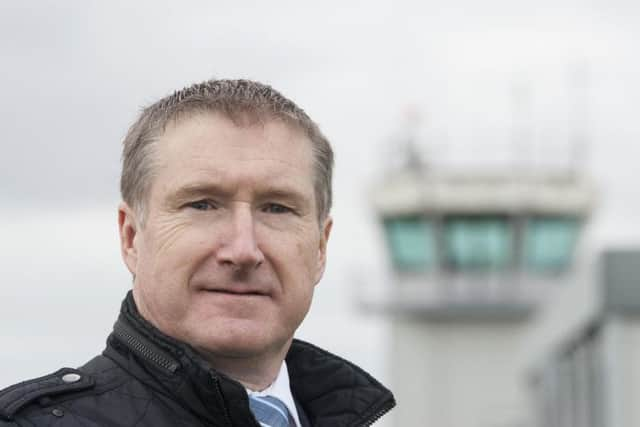Thousands look skywards to bid farewell to the Tornado


A “three ship” – three jets in formation – flew over the crowd gathered at BAE Systems’ Warton runway, the blast of the six Rolls Royce engines kicking in as they passed to the East heading for the firm’s sister site at Samlesbury as part of a national farewell tour.
The fly-past lasted seconds, but the service career of the Tornado lasted longer than most RAF aircraft, from 1979 until next month when it is being retired.
Advertisement
Hide AdAdvertisement
Hide AdIts duties will be taken over by the Typhoon and F-35 Lightning II.


But its not the end of the line. The German and Italian partner nations in the project as well as the Saudis will continue to operate the versatile aircraft.
Among the crowd were Alan Thornber, deputy managing director of Panavia the international firm put together to design and build the Tornado, test pilot Eric Bucklow who flew it and Ian Lawrenson who worked on the aircraft at Warton for much of his career.
Alan recalled how it had been a triumph of team work and diplomacy to bring the UK, Germans and Italians together to build one of the most successful warplanes of modern times.He was based at Panavia’s headquarters in Germany from 1969 to 1987, representing BAE Systems’ and the UK’sinterests in the project.
Advertisement
Hide AdAdvertisement
Hide AdHe said: “Panavia was set up on March 26 1969, and is therefore celebrating its 50th year. I went out to Munich as development supply manager at first then deputy director of procurement, responsible for organising suppliers and placing contracts.


"It was a hugely successful project, with a few problems for time to time but an example of great teamwork and diplomacy between the nations.”
Eric Bucklow of Wrea Green was chief production test pilot for Tornado in the UK and admitted to having a tear in his eye as the three aircraft flew past for the last time.
He said: “My job was to test fly each Tornado as it came off the production line before they passed their tests and were handed over to the RAF. Those seven years were probably the most interesting of my flying career.
Advertisement
Hide AdAdvertisement
Hide Ad“It was a very pleasant aeroplane to fly with lots of new things terrain following radar which allowed you to fly blind at just 200 feet, fly-by wire, meaning computer assisted controls, reversed thrust to assist with landings and of course the swing wings which allowed it to be retracted for supersonic flight. All combat aircraft come to a natural service end mainly due to advances in technology.


Ian Lawrenson from Blackpool started with BAE Systems as a young craft apprentice in 1981 at Strand Road in Preston. He said: “My first job when I came out of training was working on Tornado in 13 hangar at Warton.”
He said the front and rear body sections were made in the UK, the centre fuselage in Germany and the wings in Italy in a collaboration that split both the development costs of the new aircraft and the workload.
“It was a huge success, the 40 year length of service with the RAF and the fact it was used in so many fields of operations, is testament to that. It has supported the jobs of so many BAE workers, the supply chain and local economy and it has served the country well.”